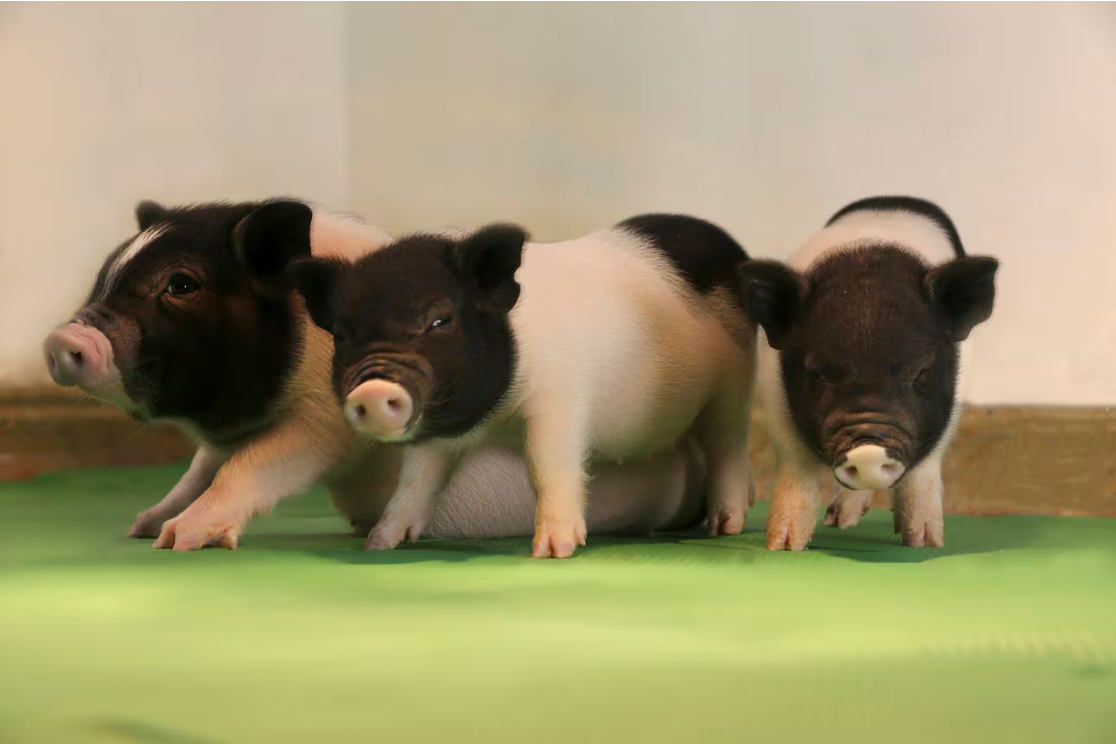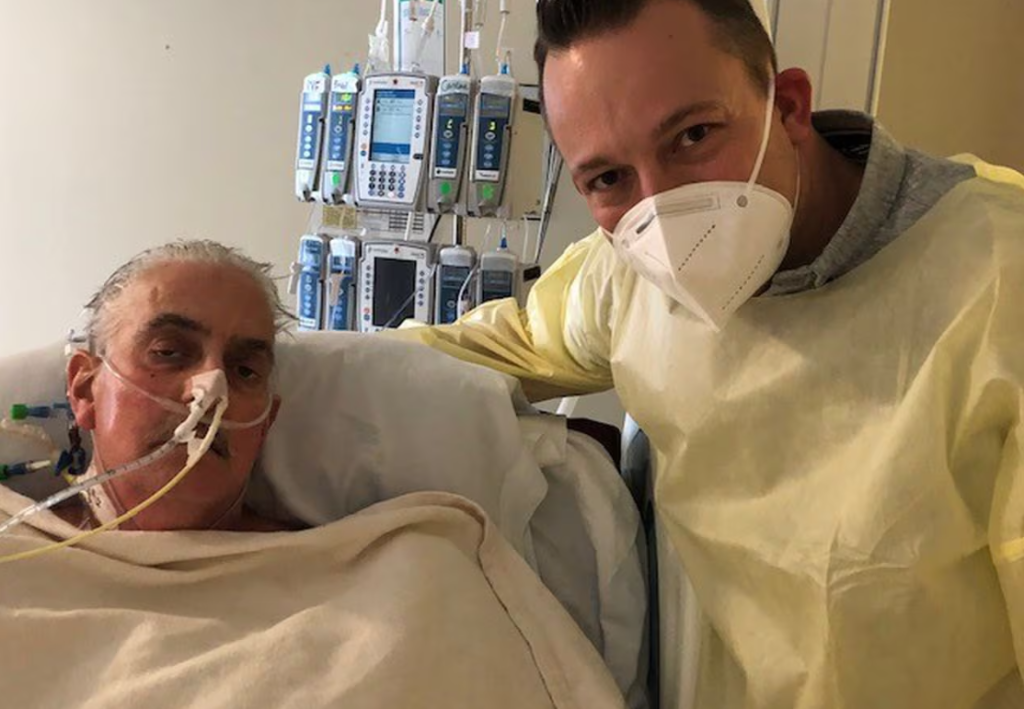动物移植到人类的简史

【中美创新时报2024年3月22日讯】(记者温友平编译)从皮肤移植到心脏,世界各地的外科医生都在寻找猪、青蛙和其他生物来延长人类的生命。《波士顿环球报》记者格蕾丝·吉尔森(Grace Gilson)和通讯员玛蒂·考(Maddie Khaw )对此进行如下梳理报道。
几个世纪以来,科学家们一直在尝试使用动物器官来改善人类健康,但随着基因编辑和免疫学的进步,这项技术最近取得了飞跃性的进步。猪尤其有前途,因为它们易于繁殖,而且它们的器官在基因上与人体器官相似。
跨物种移植(或异种移植)的历史可以追溯到 17 世纪。
导致本周突破的进展简史。
1667 年——法国医生让-巴蒂斯特·丹尼斯 (Jean-Baptiste Denis) 进行了第一例动物到人类的输血,将羔羊的血液转移给了一名 15 岁的男性患者,这被认为是最早的动物到人类的移植实例。丹尼斯进一步进行的异种输血结果好坏参半,导致这种做法在法国被禁止多年。

19 世纪——不同物种(如青蛙、兔子、羊、鸡和鸽子)和人类之间的皮肤移植变得流行。
1838 年——纽约眼科医生理查德·基萨姆 (Richard Kissam) 将猪角膜移植到一名只有一只眼睛功能的年轻爱尔兰人身上,但一个月内就失败了。
1906 年——法国里昂的一位外科医生进行了第一例猪肾移植手术,并产生了尿液。 三天后肾脏衰竭。
1963 年 —— 杜兰大学的 Keith Reemtsma 博士使用免疫抑制疗法将恒河猴肾脏移植到人类身上,该疗法可防止人体对供体组织或器官的排斥。早期不使用免疫抑制的异种移植尝试导致存活率很低。患者存活 63 天。
1964 年——美国外科医生詹姆斯·哈迪 (James Hardy) 在前一年率先进行了首例人类肺移植手术,并使用黑猩猩心脏进行了首例动物到人类的心脏移植手术。病人在两小时内死亡。
同年,Reemtsma 将黑猩猩肾脏移植到 13 名不同的患者体内,存活时间持续了 11 天到 9 个月,这是目前异种移植中最长的存活时间。
1968 年—— 唐纳德·罗斯 (Donald Ross) 博士在伦敦进行了第一例从猪到人的心脏移植手术。持续约五分钟。
1984 年——“Baby Fae”,一个患有致命性心脏畸形的一个月大婴儿,从加利福尼亚州洛马琳达的 Leonard Bailey 博士那里接受了一颗狒狒心脏。Baby Fae 在移植后存活了 21 天,比接受移植的任何人都长了两周。以前曾有过一颗猿猴的心。

图片:Baby Fae 是世界上第一个接受狒狒心脏移植手术的婴儿,他睡在洛马琳达大学医学中心。洛马琳达医院的医生表示,他们对孩子的进步感到“高兴”。Baby Fae 将在备受争议的移植手术后 21 天死亡。BETTMANN/BETTMANN ARCHIVE
1992 年——洛杉矶锡达斯西奈医疗中心的外科医生将猪肝植入一名等待人类捐赠者的年轻危重妇女体内。36小时后她去世了。
1993年——卡尔·格罗斯(Carl Groth)领导的瑞典研究小组首次将猪胰岛细胞(来自胰腺的产生胰岛素的细胞)移植到糖尿病患者体内,但没有产生任何临床益处。
1996 年——印度的心脏外科医生将猪心脏移植到人体内。病人存活了7天。
1998 年——费城的研究人员分享了将猪的胎儿脑细胞移植到人类体内以治疗帕金森病一年后的结果。 这项研究标志着首次将动物的脑细胞移植到人类身上。
2002 年——墨西哥城 12 名青少年接受猪细胞移植来治疗糖尿病后,研究人员公布了他们的研究结果:一半的患者需要更少的胰岛素来控制糖尿病。 一名患者在没有胰岛素的情况下生活了一年,另一名患者在没有激素补充剂的情况下生活了六个月。
2021 年——纽约大学兰格尼健康中心的医生首次将基因工程猪肾移植到使用呼吸机的死者身上。 它运行良好,在 54 小时的观察期内没有显示出排斥的迹象。

图片:大卫·班纳特和他的儿子。班尼特是第一个成功进行猪心脏移植的人。马里兰大学医学院
2022 年——马里兰大学医学院的医生将转基因猪心脏移植到一名 57 岁的末期心脏病患者体内。 他活了将近七个星期。
2023 年——UMD 医生为一名 58 岁的晚期心脏病患者进行了第二次猪心脏移植手术。 他的寿命大约是两个月。
题图:基因编辑后的小猪可以将器官和组织移植到人类身上。纽约时报
附原英文报道:
A brief history of animal-to-human transplants
From skin grafts to hearts, surgeons around the world have looked to pigs, frogs, and other creatures to prolong human life.
By Grace Gilson and Maddie Khaw Globe Correspondent,Updated March 21, 2024
Piglets whose genes were edited to make organ and tissue transplantation into humans possibe.NYT
Scientists have experimented for centuries with using parts from animals to improve human health, but the technology has leapt ahead recently with advances in gene editing and immunology. Pigs have emerged as especially promising, because they are easy to breed and their organs are genetically similar to human organs.
Cross-species transplantation — or xenotransplantation — dates as far back as the 17th century.
A brief history of the advances that led to this week’s breakthrough.
1667 — In what is recognized as the earliest instance of animal-to-human transplantation, French physician Jean-Baptiste Denis performs the first animal-to-human blood transfusion, transferring lamb’s blood to a 15-year-old male patient. Further xenotransfusions performed by Denis meet mixed results, leading the practice to be banned in France for a number of years.
19th century — Skin grafts between various species — such as frogs, rabbits, sheep, chickens, and pigeons — and humans gain popularity.
1838 — New York based ophthalmologist Richard Kissam transplants a pig cornea into a young Irishman with only one functional eye, but it fails within a month.
1906 — A surgeon from Lyon, France, conducts the first pig-to-human kidney transplant that results in the production of urine. The kidney fails after three days.
1963 — Dr. Keith Reemtsma of Tulane University transplants a rhesus monkey kidney to a human using an immunosuppression regimen, which prevents the body’s rejection of donor tissue or organs. Earlier attempts at xenotransplantation without immunosuppression resulted in poor survival rates. The patient survives for 63 days.
1964 — American surgeon James Hardy, who the previous year pioneered the first human lung transplant, conducts the first animal-to-human heart transplant using a chimpanzee heart. The patient dies within two hours.
The same year, Reemtsma transplants chimpanzee kidneys into 13 different patients, with survival lasting 11 days to nine months — the longest survival of any xenotransplant at this time.
1968 — Dr. Donald Ross performs the first pig to human heart transplant in London. It lasts around five minutes.
1984 — “Baby Fae,” a month-old infant with an often fatal heart deformity, receives a baboon heart from Dr. Leonard Bailey in Loma Linda, Calif. Baby Fae lives for 21 days after the transplant, two weeks longer than anyone with a simian heart ever had before.
Baby Fae, the world’s first infant to receive a baboon heart transplant, slept at Loma Linda University Medical Center. Doctors at Loma Linda said they were “elated” with the child’s progress. Baby Fae would die 21 days after the controversial transplant.BETTMANN/BETTMANN ARCHIVE
1992 — Surgeons at Cedars-Sinai Medical Center in Los Angeles implant a pig liver into a young, critically ill woman as she awaits a human donor. She dies after 36 hours.
1993 — A Swedish group headed by Carl Groth is the first to transplant pig islet cells, cells from the pancreas that produce insulin, into patients with diabetes, but there is no clinical benefit.
1996 — Cardiac surgeons transplant a pig’s heart into a human in India. The patient survives for seven days.
1998 — Researchers in Philadelphia share results one year after transplanting fetal brain cells from pigs into humans to treat Parkinson’s disease. This research marks the first time brain cells from an animal have been transplanted into a human.
2002 — After 12 Mexico City adolescents received pig cell transplants to treat diabetes, researchers present their findings: Half the patients required less insulin to keep their diabetes in check. One patient lived insulin-free for a year and another lived without the hormone supplements for six months.
2021 — Doctors at NYU Langone Health in New York perform the first transplant of a genetically engineered pig kidney into a deceased human on a ventilator. It functioned well and showed no signs of rejection over a 54-hour observation period.
David Bennet and his son. Bennet was the first person to ever successfully have a pig heart transplanted. UNIVERSITY OF MARYLAND MEDICINE
2022 — Doctors at the University of Maryland School of Medicine transplant a genetically modified pig’s heart into a 57-year old patient with end-stage heart disease. He lives for nearly seven weeks.
2023 — UMD doctors perform a second pig heart transplant in a 58-year-old patient with terminal heart disease. He lives for around two months.

